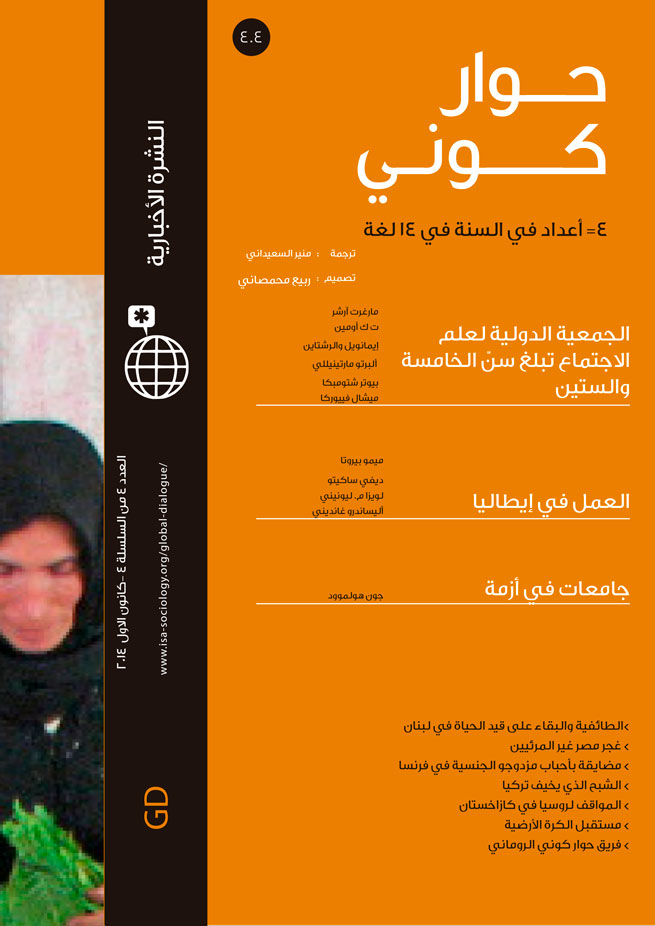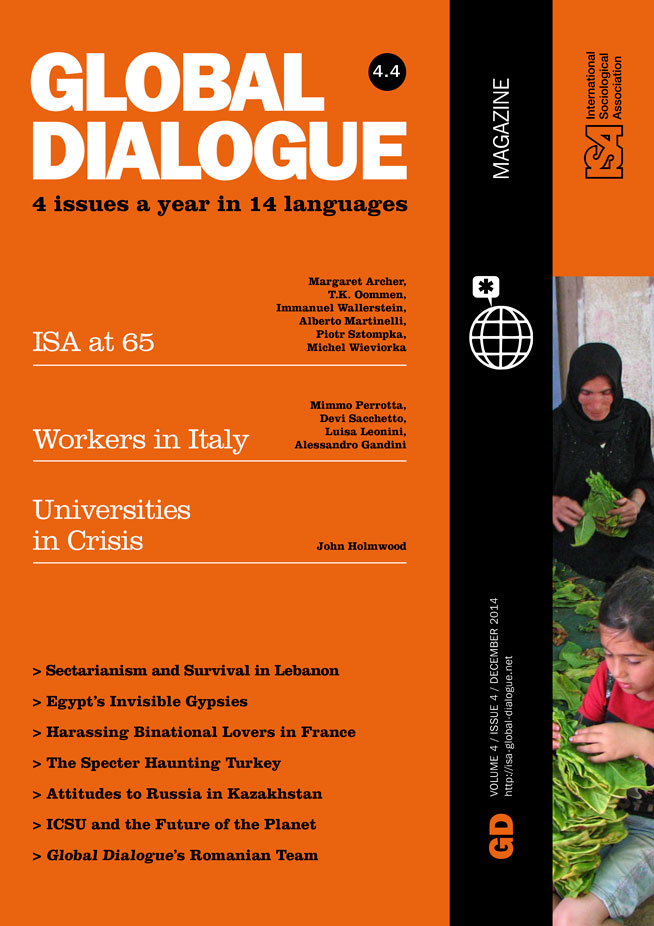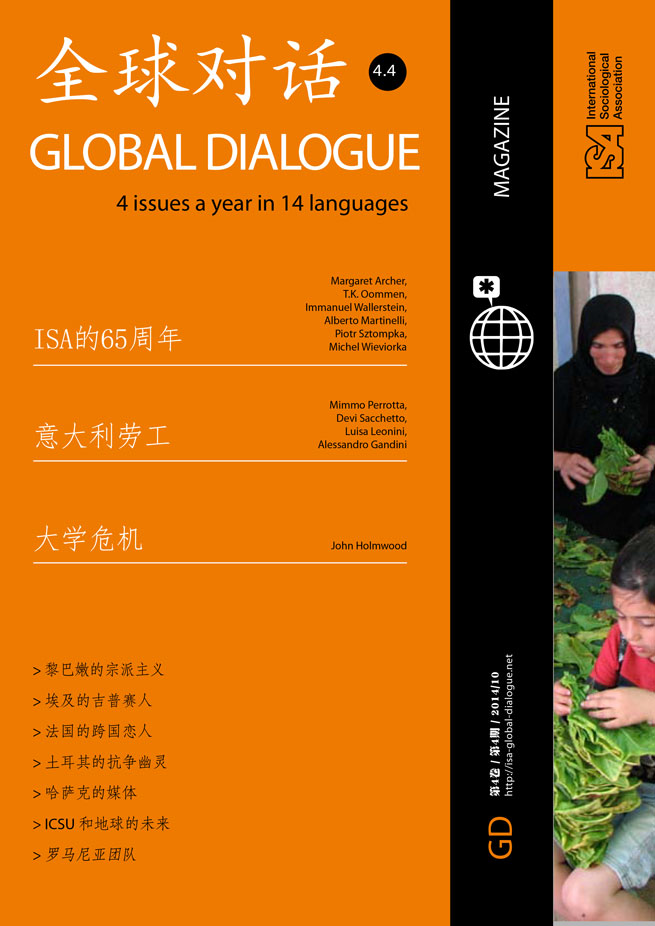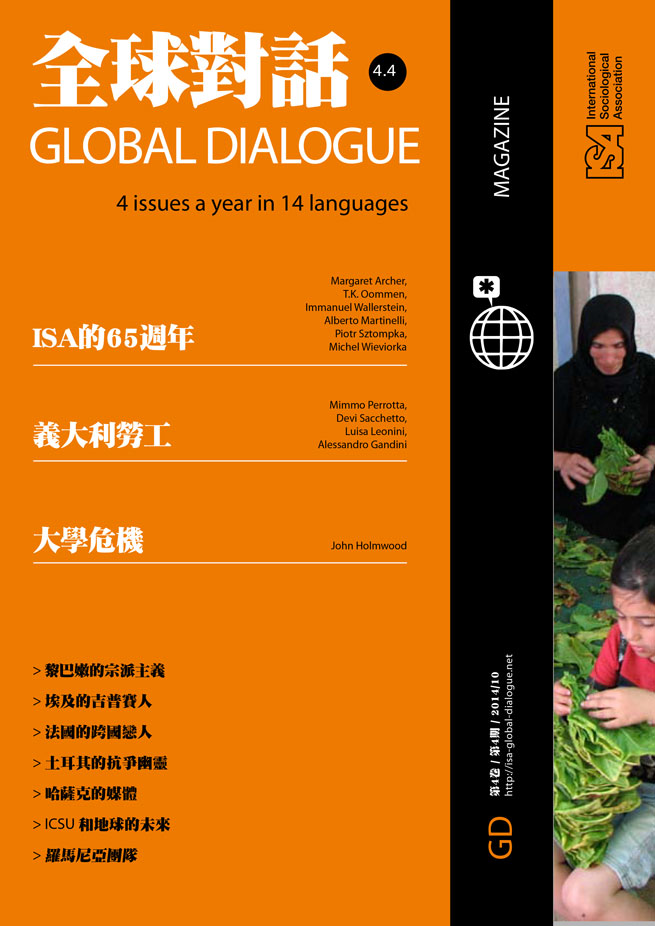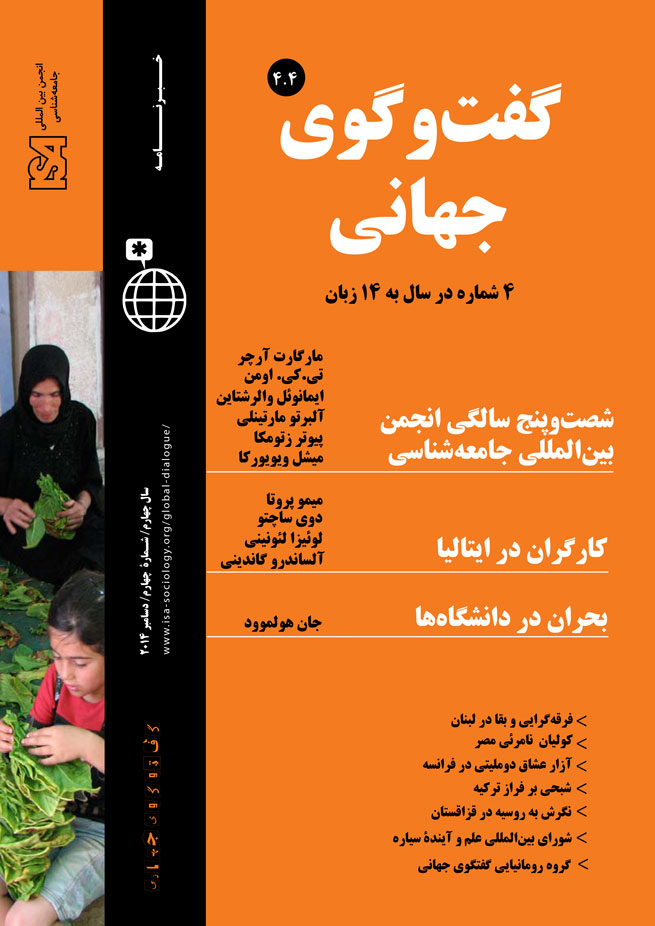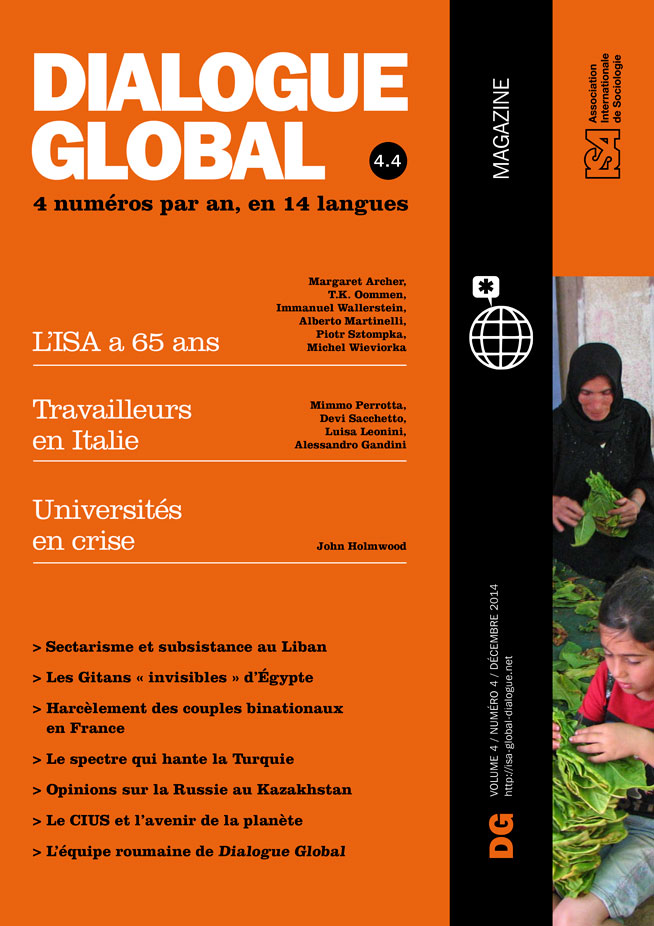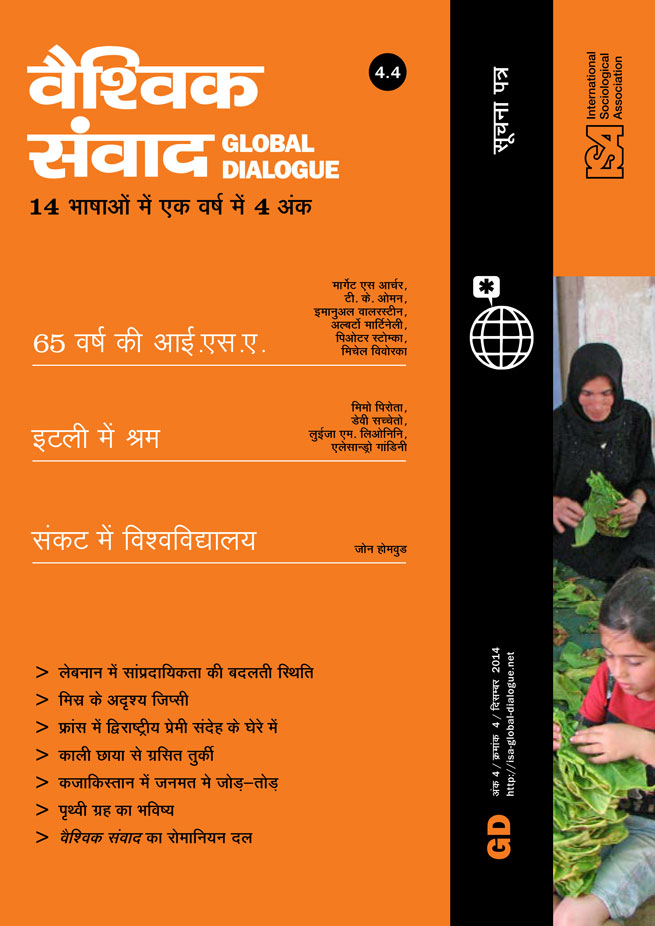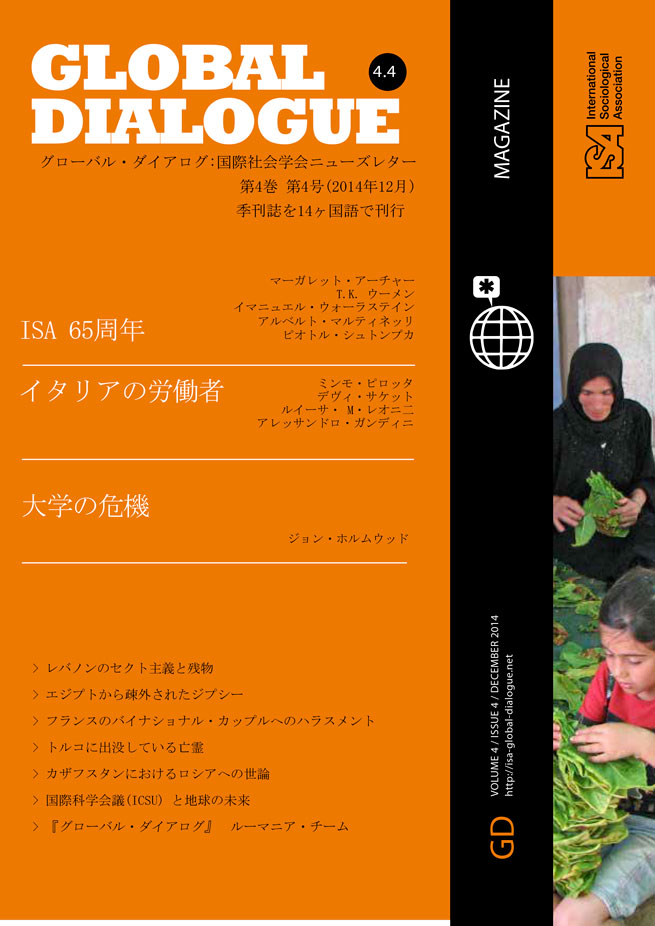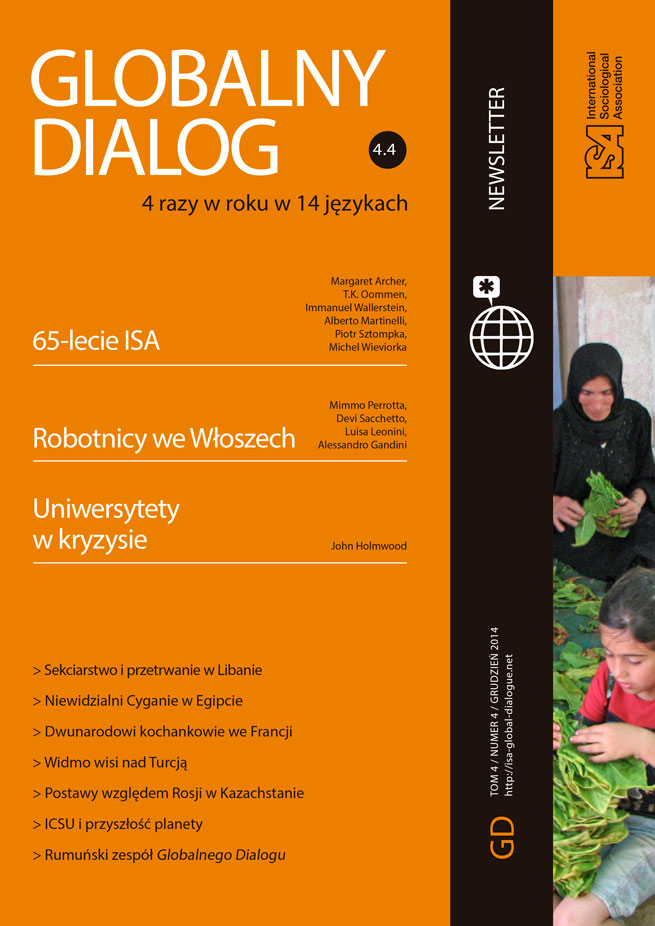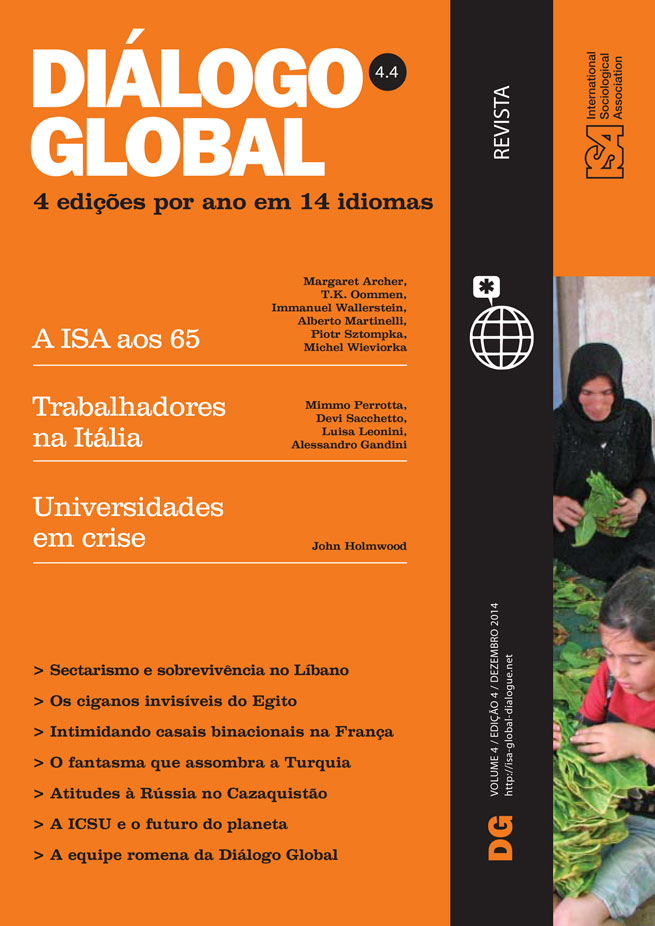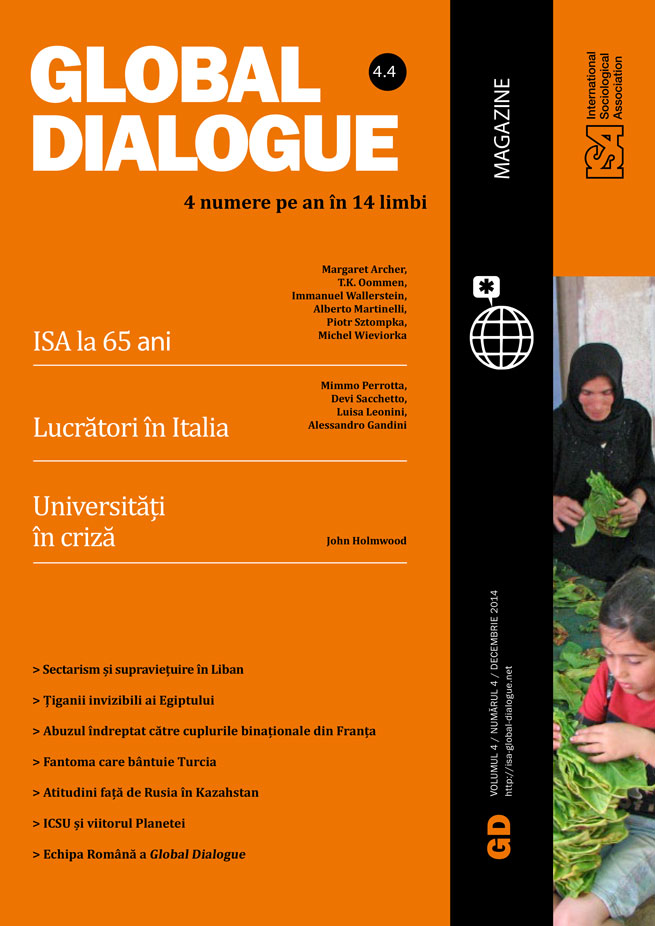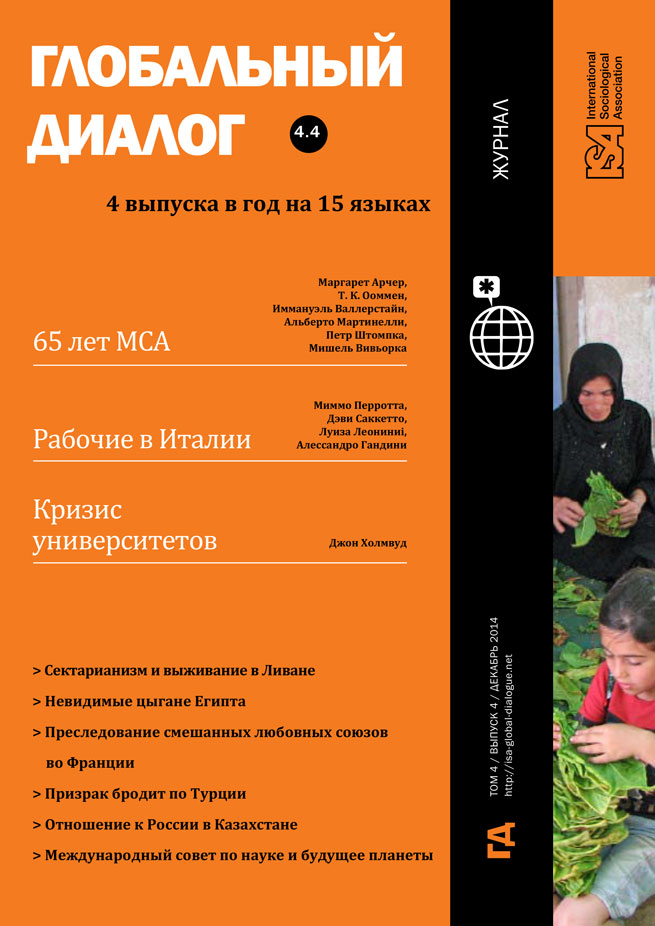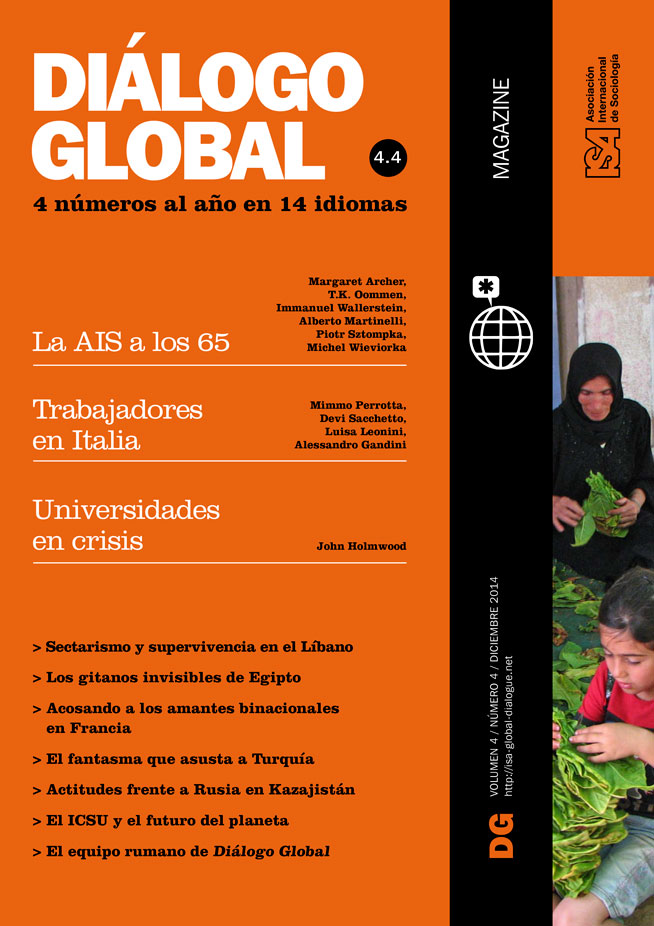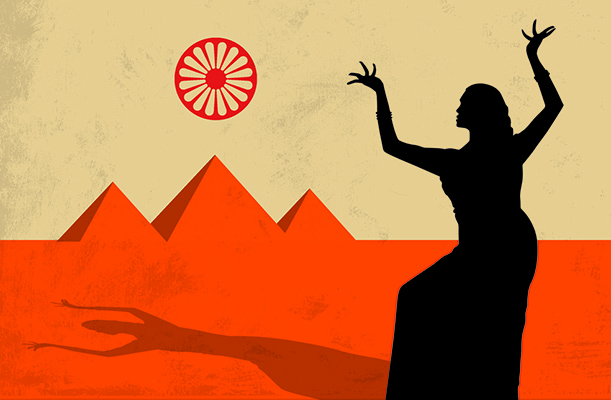Read more about The Discriminated Outsider

Binational Lovers under Suspicion in France
by Manuela Salcedo and Laura Odasso
December 12, 2014
It comes as a surprise to many Egyptians that the word “Gypsy” originates from “Egyptian”: a medieval misconception linked to the mysterious Eastern travelers to Egypt. It continues to amaze Egyptians today that there are Egyptian Gypsies – or at least, that there are groups of people who are sometimes identified as Eastern Gypsies, or Dom, who are often viewed as possessing the psychic and magical powers often attributed to European Roma, and who have experienced similar marginalization and pariah-like status.
Eastern Gypsies are called Dom; different sub-groups are identified in Syria, Turkey, Israel and Egypt. However, whereas Doms and the Roma people have been dramatically stigmatized in most of Europe and some Middle Eastern countries, Doms in Egypt are not officially recognized, in part because religion is the main identifier in Egypt. The Egyptian national identity card, which identifies the religion of its holder, offers a choice between three religions: Christianity, Islam and Judaism. Up until very recently, people who were of a different religion than the official ones were simply denied access to a national identity card. Since religion is the official marker, other markers, such as ethnicity, are not used; groups whose identity would be defined in ethnic terms – the Bedouin, the Nubians, and, of course, the Doms – are socially ignored.
Lacking either identity-based categorization or statistical representation, it is almost impossible to estimate the size of Egypt’s Dom population. The main providers of data are evangelical organizations, who estimate the group to include between one and two million people, most of whom are Muslim. Doms in Egypt are divided into different sub-groups or tribes, a concept which is also more meaningful in a Middle Eastern context. Among the tribes names are the Ghagar, the Nawar, the Halebi – words which are also insults in Arabic. Evangelical organizations suggest that Ghagar, which means “vagrant,” may be the largest group of Egyptian Doms.
Since the Doms do not exist officially, there has been no attempt to either eradicate or assimilate them. In Europe, forced integration and marginalization seem to be the only two possible outcomes for the Roma groups, whose nomadism has often been perceived as defiance, or affinity with adverse allegiances. In Egypt, by contrast, nomadism has been historically an integrated aspect of the Egyptian society, even if nomads have been throughout the twentieth century regarded as anachronistic; furthermore, nomadism in the Middle East has mostly been associated with Bedouins and nomadic pastoralists, not with Gypsies.
The Egyptian state, then, seems oblivious to the existence of Gypsies, but are they nonetheless present in collective representations and imagination? The late Nabil Sobhi Hanna conducted ethnographic research about 50 years ago among the semi-nomadic Ghagar communities in the area of Sett Ghiranaha, in the Nile Delta region. The Ghagars he described often lived on the edge of villages, and had very specific occupations: horse and donkey dealers, iron workers and entertainers. More recently, many have established themselves in neighborhoods of downtown Cairo, Sayida Zeinab or the infamous City of the Dead, where they are metal workers, blacksmiths, “tinkers,” wool traders, shearers, saddlers, musicians and dancers or engaged in small trade as peddlers. They sometimes resort to begging, like many poor urban dwellers. Their neighbors in the City of the Dead are the Zabaleen, Orthodox Copts who are often trash collectors. While the vast majority of Doms are in fact sedentary, their contemporary activities are still linked to short-term spatial mobility: they work at short-term jobs, they occupy rented houses, they may move from place to place within a neighborhood. They still seem to exist on the margins of Egyptian society.
While most Egyptians are not aware of the presence of Gypsies, upon giving it more thought. many acknowledge there are indeed Gypsies in Egypt, mentioning that they may have encountered women telling fortunes, travelers in rural areas, thieves or entertainers in religious festivals. Although Doms are not fully identified, they seem to exist at the margins of people’s subconscious, and can easily materialize in specific contexts and by fragments.
The figure of the “Gypsy” is often more present in the countryside: they may belong to yet another tribe in the complex rural system. Gypsies are known in a fragmented way for their contribution to Egyptian music or through the Ghawazee, belly dancers of the Nawar tribe known as beautiful temptresses. The Ghawazees were Harem dancers, who were banished from Cairo in the nineteenth century – later to be romanticized in movies such as the 1950s blockbuster, Tamr Hindi, in which a wealthy young man falls in love with a Ghawazee and tries to make a respectable person out of her. He fails, and the Ghawazee stays where she belongs. Some boundaries cannot be crossed.
Gypsies also perform as entertainers during Moulids – part pilgrimage, part carnival and part mystical Islamic ceremony. In Egypt, Moulids are not limited to the Prophet’s birthday (Moulids en Nabi), but can also refer to the celebration of local Sufi saints, often attracting the attention of Egyptian authorities because Moulids are approved by Shia and Sufi authorities but not by the Sunni, the Egyptian majority. Despite official disapproval, Moulids are widely practiced; they are similar to Christian carnivals, a time of anarchy and license, where usual norms can be broken: gender segregation is discarded, sexual taboos are forgotten, people dance in a state of general hysteria. Doms are very much part of the Moulid, which is not surprising given their association with entertainment and immoral arts. Women dance and men play music. Dom women do what respectable females may not, that sort of middle role that keeps them in the Simmelian stranger category.
So, who are the Gypsies of Egypt? Not officially recognized, they are known by the population as nomads and horse dealers in rural Egypt, or as entertainers, Moulids dancers and Ghawazees, fortune tellers and plain beggars in more urban areas. All in all, they are mostly part of poorer Egyptian communities, marginalized and ignored. Much as Edward Said suggested the Orient was shaped by European Orientalists in the nineteenth century, Gypsies were “othered” and constructed as exotic (oriental) others within the European boundaries. Ironically, in Egypt Gypsies have also been orientalized: the characteristics attributed to them are strikingly similar to those associated with the Orient, or with Gypsies inside Europe. The trichotomy of danger, revulsion and attraction, that was associated with Arab males (dangerous fanatics, etc.) or women (sensual Harem creatures, etc.), is also associated with Gypsies. The males are seen as untrustworthy and thieves, the women as mysterious, dangerous (fortune tellers, spell casters) and tempting, as belly-dancers, Ghawazees or prostitutes.
Studying Doms in Egypt is particularly fascinating because of the questions their experiences raise: Are there transnational Gypsy practices and identities that encompass borders and nation-states? How are these practices and identities constructed and what is their function? Are the Dom/ Roma the eternal pariahs? Are they the eternal threat to the national identity? And how does a country like Egypt deal with such minorities, both religious and non-religious?
Alexandra Parrs, American University in Cairo, Egypt <aparrs@aucegypt.edu>
This issue is not available yet in this language.
Request to be notified when the issue is available in your language.
If you prefer, you can access previous issues available in your language:
